The eclipse was the turning point, just as it should be. We drove northward about two hours deep into the Maine woods direction Millinocket Lake, in the shadow of Mt Katahdin and right in the Path of Totality. We sat by the frozen lake where a couple dozen onlookers had gathered on the bank by the melting edge of the lake, the eclipse reflecting in the dark water when day suddenly became night. The moment of totality was moving on that cosmic level — the woman sitting near us hollered in excitement “This is just incredible! I can’t believe it! Oh My God!!”, her daughter trying to hush her to no avail. The eclipse culminated in a perfect flash of light like a diamond popping off the ring of sunlight circling the moon, sparkling in the night sky. A dazzling instant later, the sun reclaimed its full brilliance, blinding, and bringing us back to daylight, soaring across the night sky, so powerful, grandiose and sweeping.
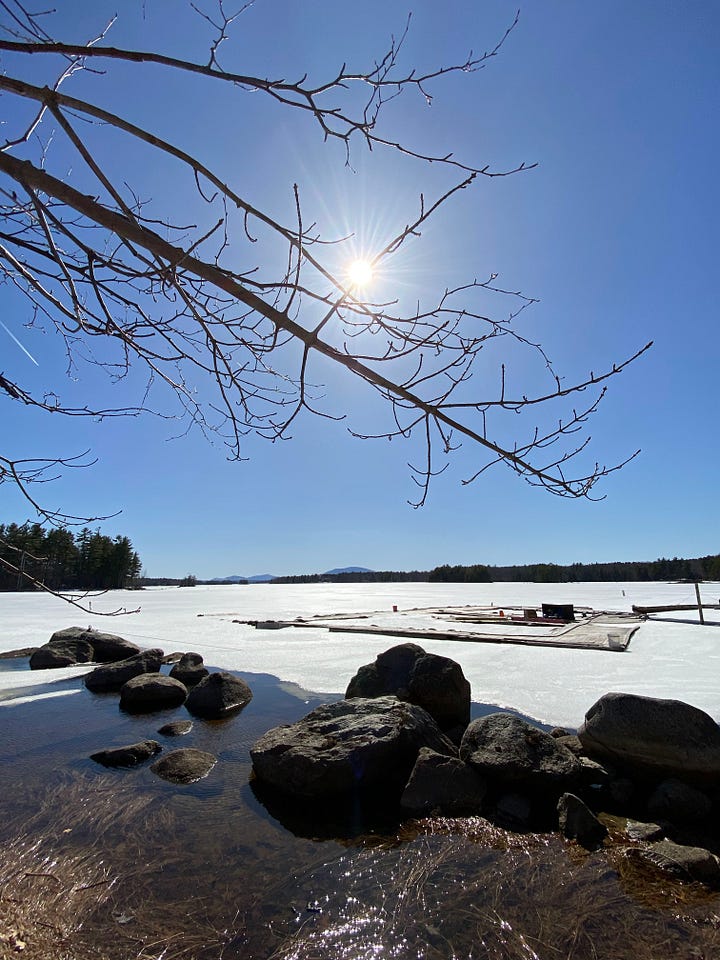
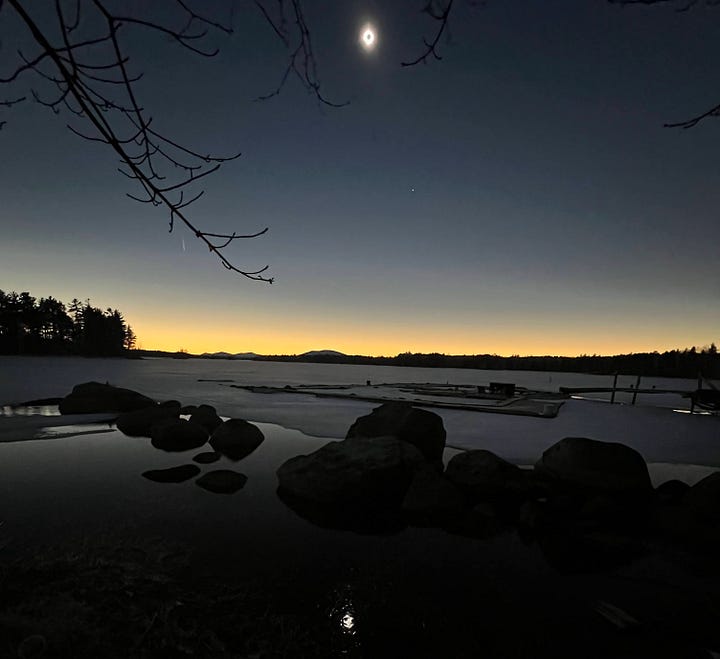
The eclipse was exactly one year to the day since Beau and I had moved into the Deer Isle farmhouse; we finally spent our first night in the house, wondering who (or what) else might be nesting in there with us! A year later, there is still so much work to do (particularly the plumbing!), but it feels like home now. We are moved in, our things are in their places, the basics like foundation, roof, insulation, heat, working shower and toilet, are all in place, and we are comfortable after a cozy winter.
The day after the eclipse, we woke up to spring. The late April snowfall had finally fully melted, and the air suddenly felt softer, with daffodils tentatively opening up. It was time to go outside and clean up from the winter. We started by pruning the peach, pear, and apple trees. We’ve never done much pruning before, but we did our best to let light through those branches. I dragged the fallen limbs into a pile near the firepit. Little did I realize this was only the beginning of my April of Dragging Branches.
Walking around the property, our gaze settled on the area just beyond the house, overgrown with an excess of trees, prickly bushes, and fallen trees all around the vernal pond. Impenetrable it felt.
If only we could thin out that dense growth of trees, clear up the fallen pines which block the way, pile up the dead branches, we’d be able to see the gentle curve of the old mossy stone wall wrapping round the overgrown backyard, and allow the sun to reflect on the vernal pond to the West of the house, as it sets.
When this was a working farm, and judging by the way the stone walls traverse the forest, the entire property was probably open pasture — and before that, there would have been ancient forests that were clear cut for agriculture by the first families who settled on the island. But now, the walls crisscross through a dense forest — with an apple orchard hidden beyond the granite ledge, down lower, limbs overgrown with suckers, broken branches hanging or piled up below. Deciduous trees are crowded by towering spruce and prickly invasive bushes.
Beau took out his new chainsaw, and we got to work on some of the more manageable saplings sprouting up like weeds in the area just beyond the house. We realized even just cutting the lower branches of a larger tree could open up a view, and make it easier to walk around it. By now we were eyeing some of the bigger spruces too, imagining a forest where the sun could get through to the forest floor, and maybe one day, the apple orchard might bear fruit again.
Beau’s saw wasn’t powerful enough to bring down any bigger trees, and safely taking down a huge tree takes skill… But soon enough we heard from Cory, who mowed the property for us last summer. At a minimum there were several tree limbs that had been damaged in the winter storms, and were a clear and present danger. They call them “widow-makers” around here! So he agreed to come by with his chainsaw and get rid of those tree limbs.
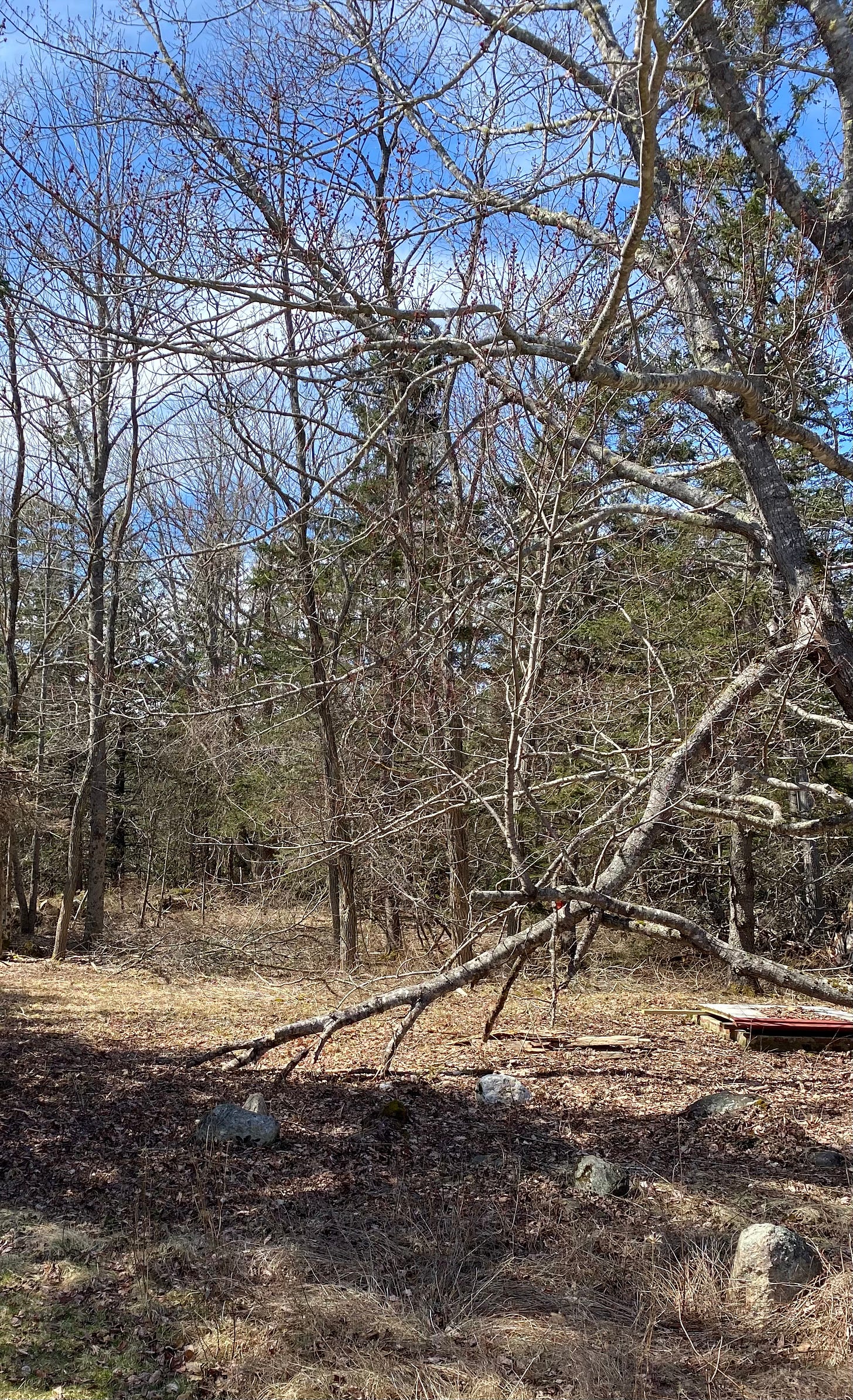
That’s when we realized Cory could do way more than help with the widow-makers. Before we knew it our goal of thinning out the land behind the house was happening in real time. Huge trees crashed to the ground.
Spruce branches were stacked into large piles like Christmas haystacks, ready for burning. We freed a hemlock from between 2 crowded spruce. We tackled a fallen cherry tree at the bottom of the blueberry barren. We took down some trees whose tops had fallen off.
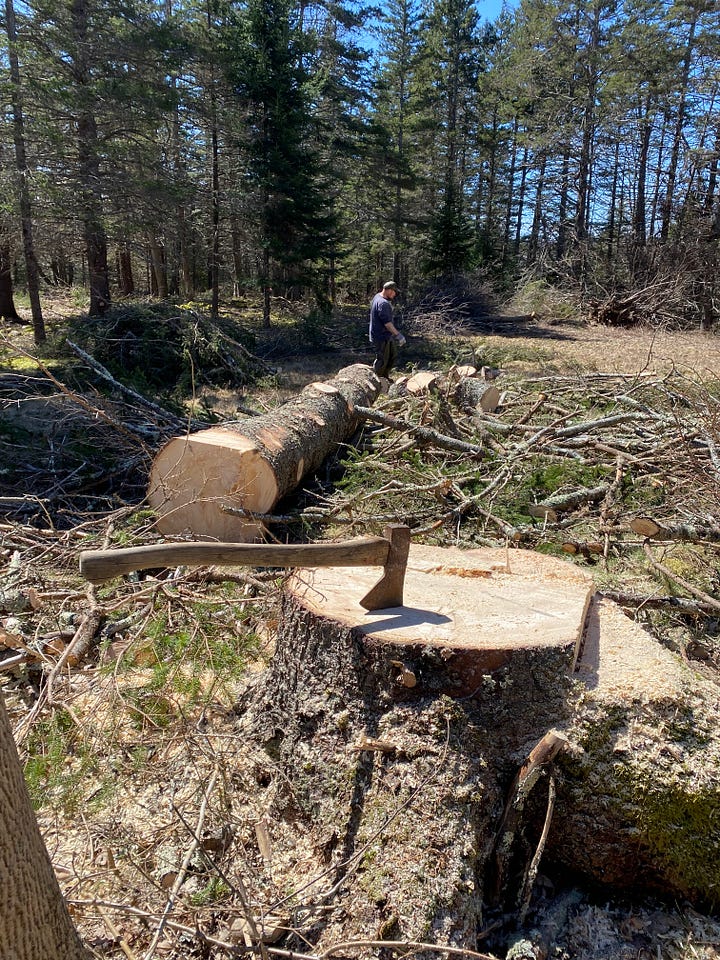
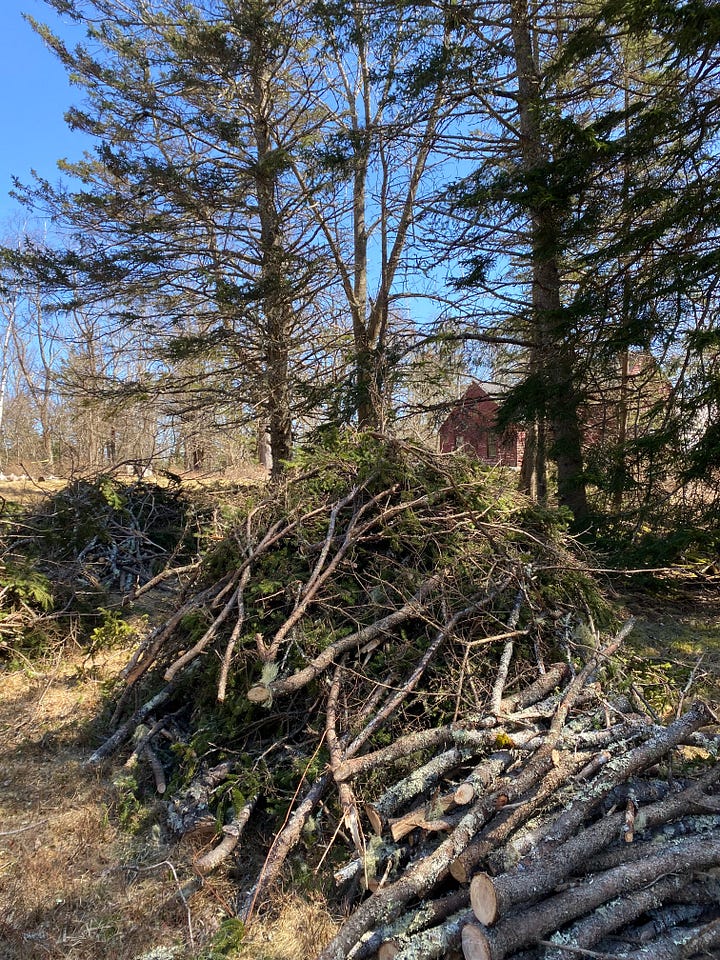
All the while, I continued dragging branches around. Some of the branches got dragged to the veggie garden so we can use them to build some new beds. Others are being inoculated by Beau, with Shitake plugs, and stacked like a pyramid. I helped pile countless spruce branches into the burn piles. My elbows ached…
All the large trunks and limbs have been cut to firewood lengths, and today Cory was here at the house with an amazing wood-splitting machine — so that hopefully the logs dry out by winter, ready for our wood burning stove.
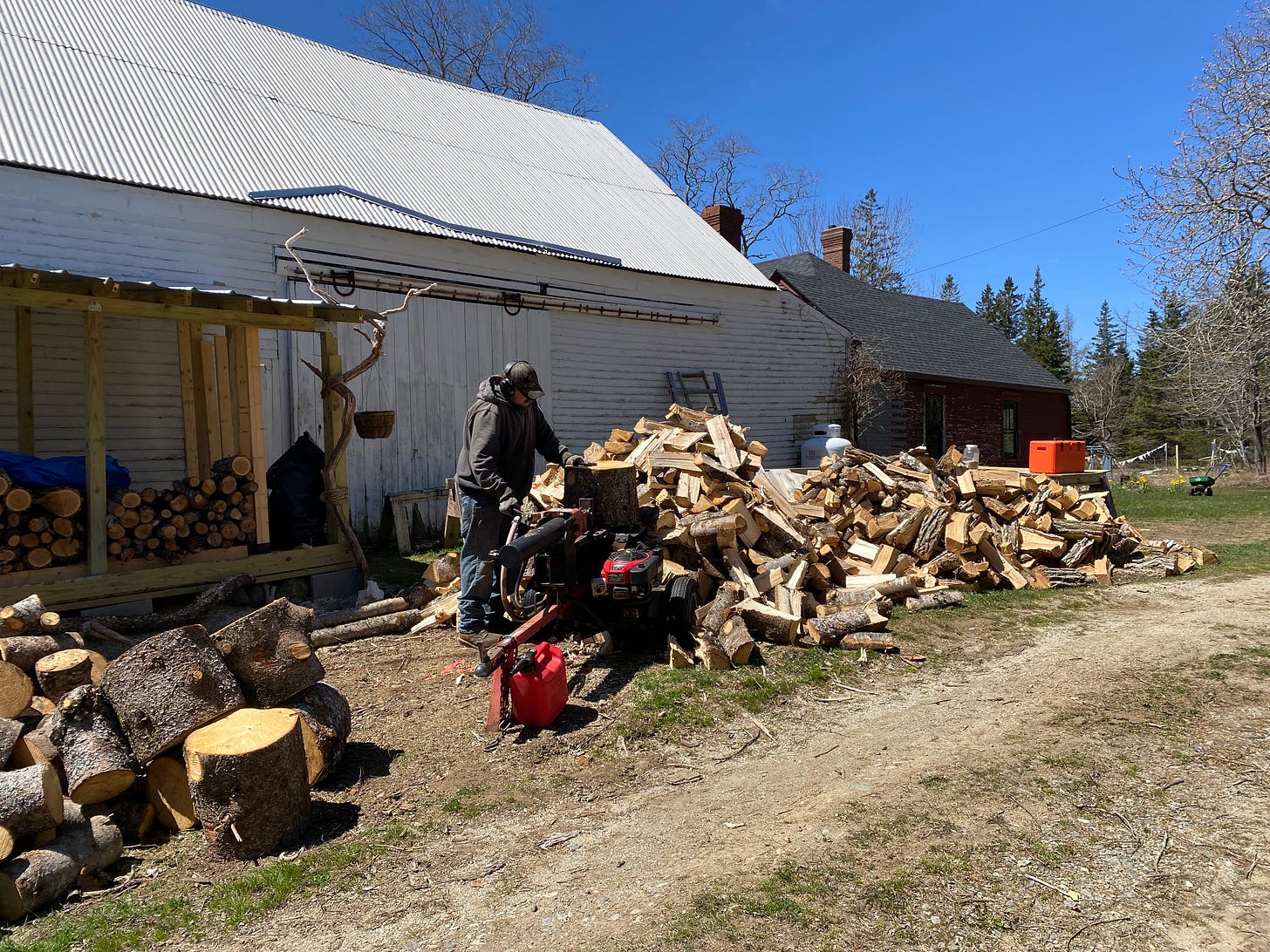
Every morning at 9 AM we check the fire permits, and rarely is it a go. One rainy Saturday we got a permit, and Beau started the fire pit. It took two hours to get going (between the rain, and the freshly cut wood), but finally the fire got hot enough to burn a huge pile of brush. By the end we had a sizable mound of ashes, which we will somehow use between the garden and the compost pile.
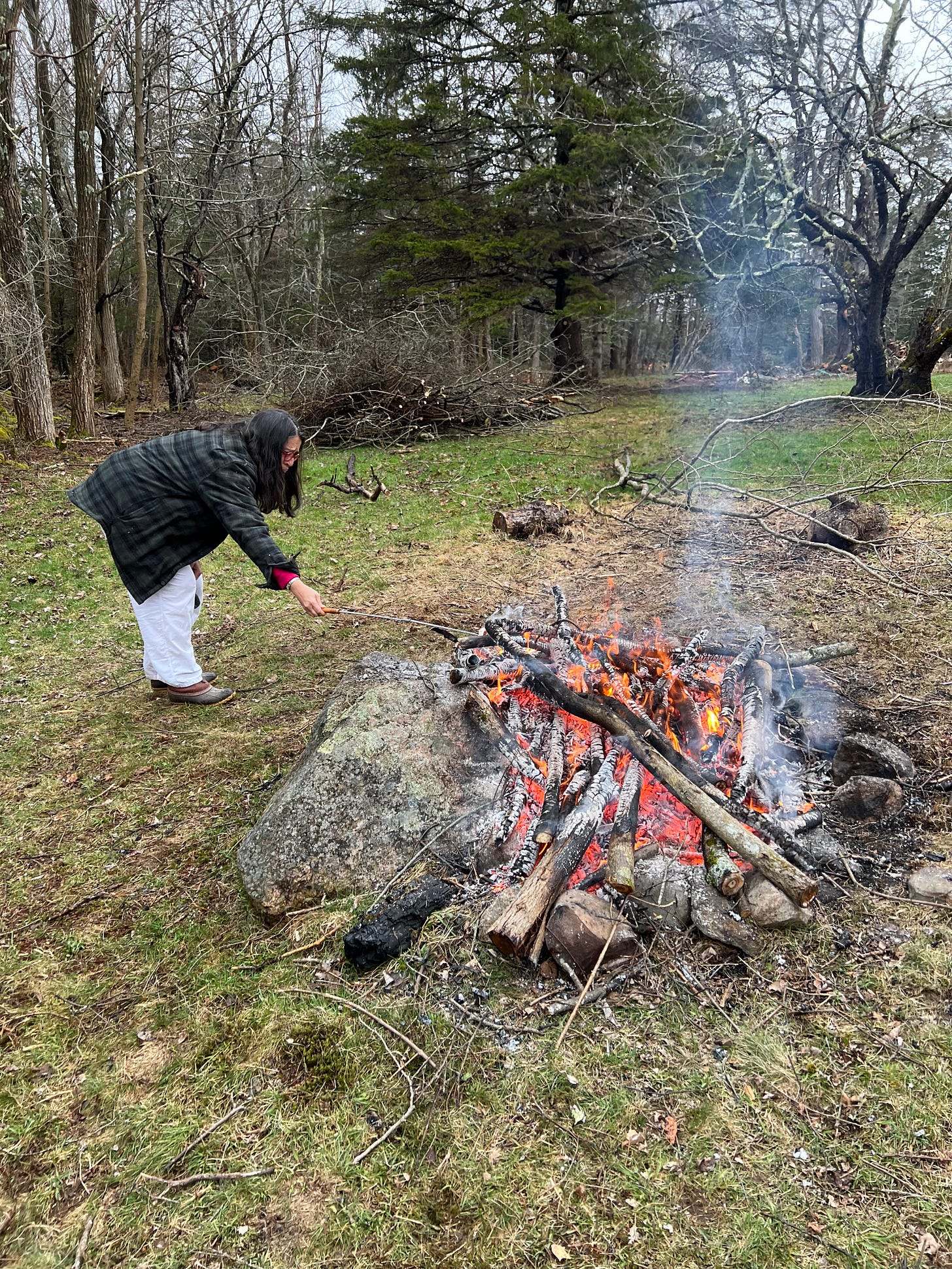
Our little campfire was nothing like the fires we will light when Cory torches the mountains of spruce branches which have been piled up throughout the property like haystacks, still waiting for a safe day for burning.
Now the light filters through the overgrown backyard, and the blueberry barren beyond has more sunshine to thrive with (I’m excited to revive our blueberry barren — and maybe even the old blueberry winnower we found waiting for us in the barn!). Sun filters to the understory of the wood. We can walk through it, and see the changes of Spring as it sets in.
Another magical thing happened by cleaning up this part of the land: as hoped, we revealed the beautiful mossy stone wall that winds around the landscape both in front of the house, and in the forest beyond. I’m enchanted with the stone walls. The hands that piled these stones, (they were known as one-handers or two-handers according to Stone by Stone by Robert M. Thorson — one of the hundreds of fascinating books left by the prior owners in the house library), no doubt the same many hands that built the barn and farmhouse.
Moss has grown over the forest walls, painting them green. In some places the walls are wide enough to walk along, and in other spots they practically sink into the ground. Ever moving branches, I started clearing the countless broken ones that have piled up over the years, on top of the walls.
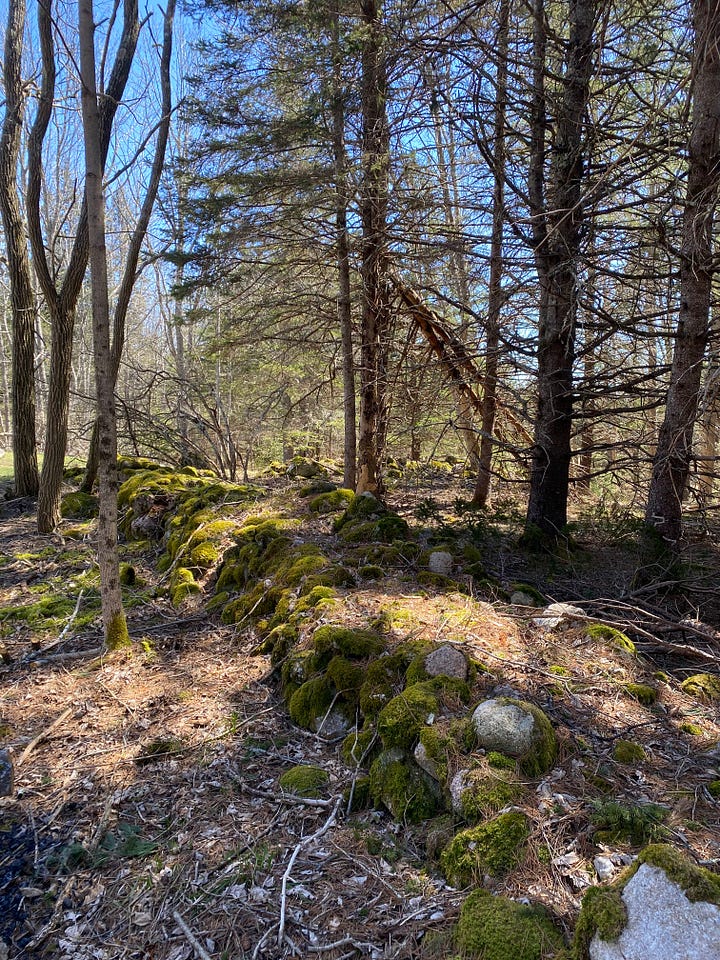
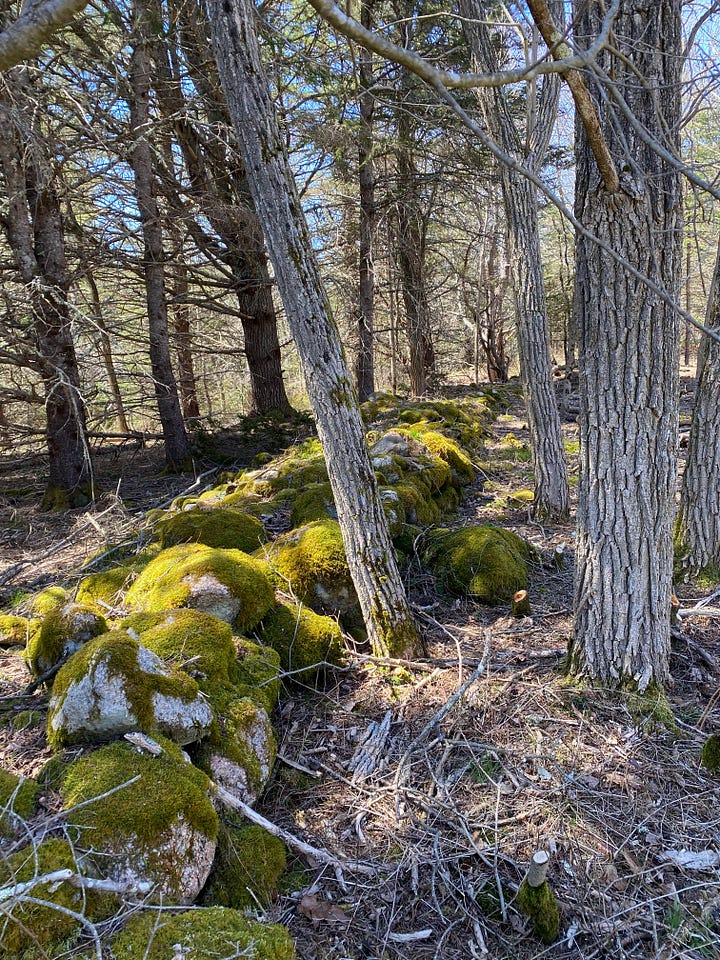
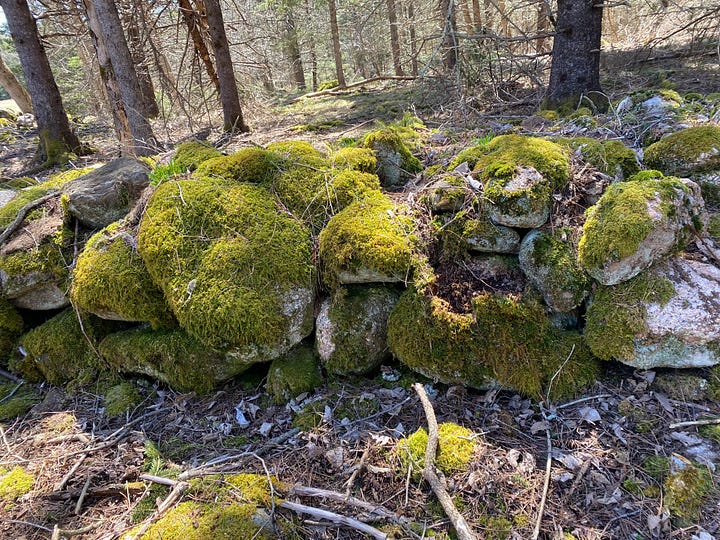
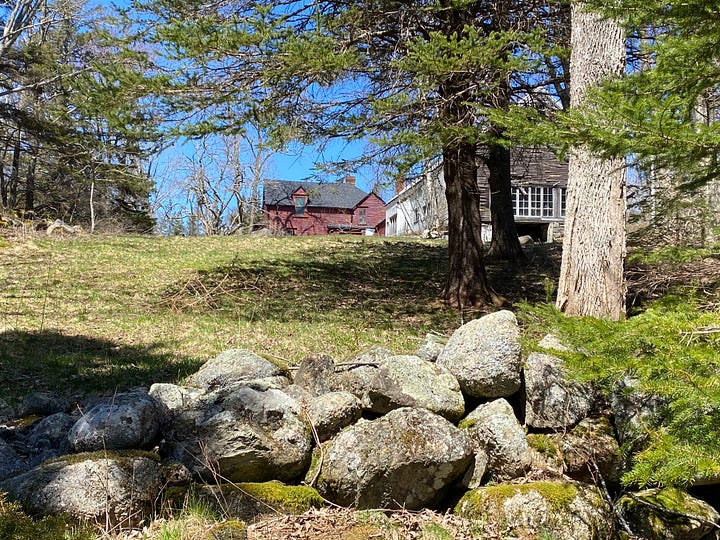
One of the ageing trees that needed felling was a maple tree with mostly dead branches that were continually dropping off its huge trunk. A local miller drove over with his grappler, and left with the massive piece of wood clutched in its jaw, crossing the island with it (he lives in “Sunrise” — the other side of the island is “Sunset”) with the goal of seeing what he can make of it in his mill. I’m secretly hoping we can use the maple for the countertops in the kitchen. That’s a story for another day.
This project — which all started after the eclipse — has felt like a gradual reveal of the history of the land. Apparently there are thousands of miles of crumbling stone walls all over New England made of stones heaved up by the frost and cleared from the fields by farmers in the 1800’s. This wall is a part of the land too, guiding us around the landscape with its gentle curves. The orchard of apple trees below the ledge and beyond the wall, where rocks are stacked in piles, the road which wends its way through the forest, guiding us beyond time, and constantly changing. For now, I’ll get back to dragging more branches!


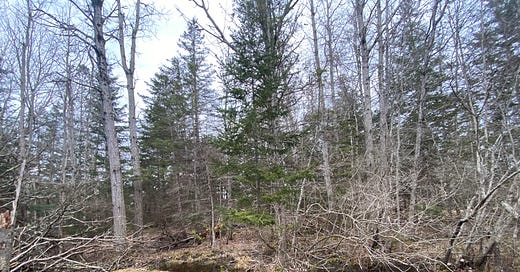




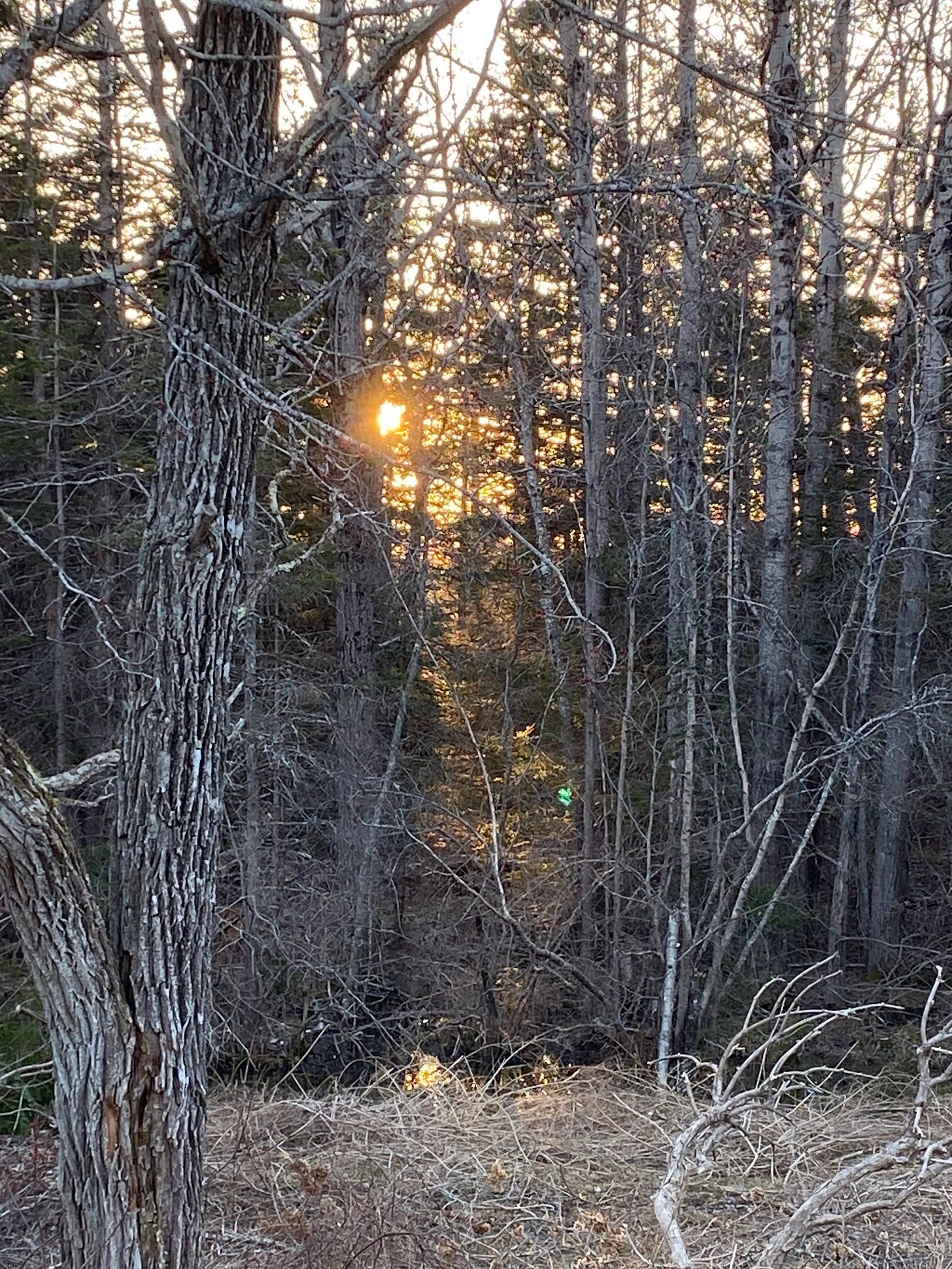
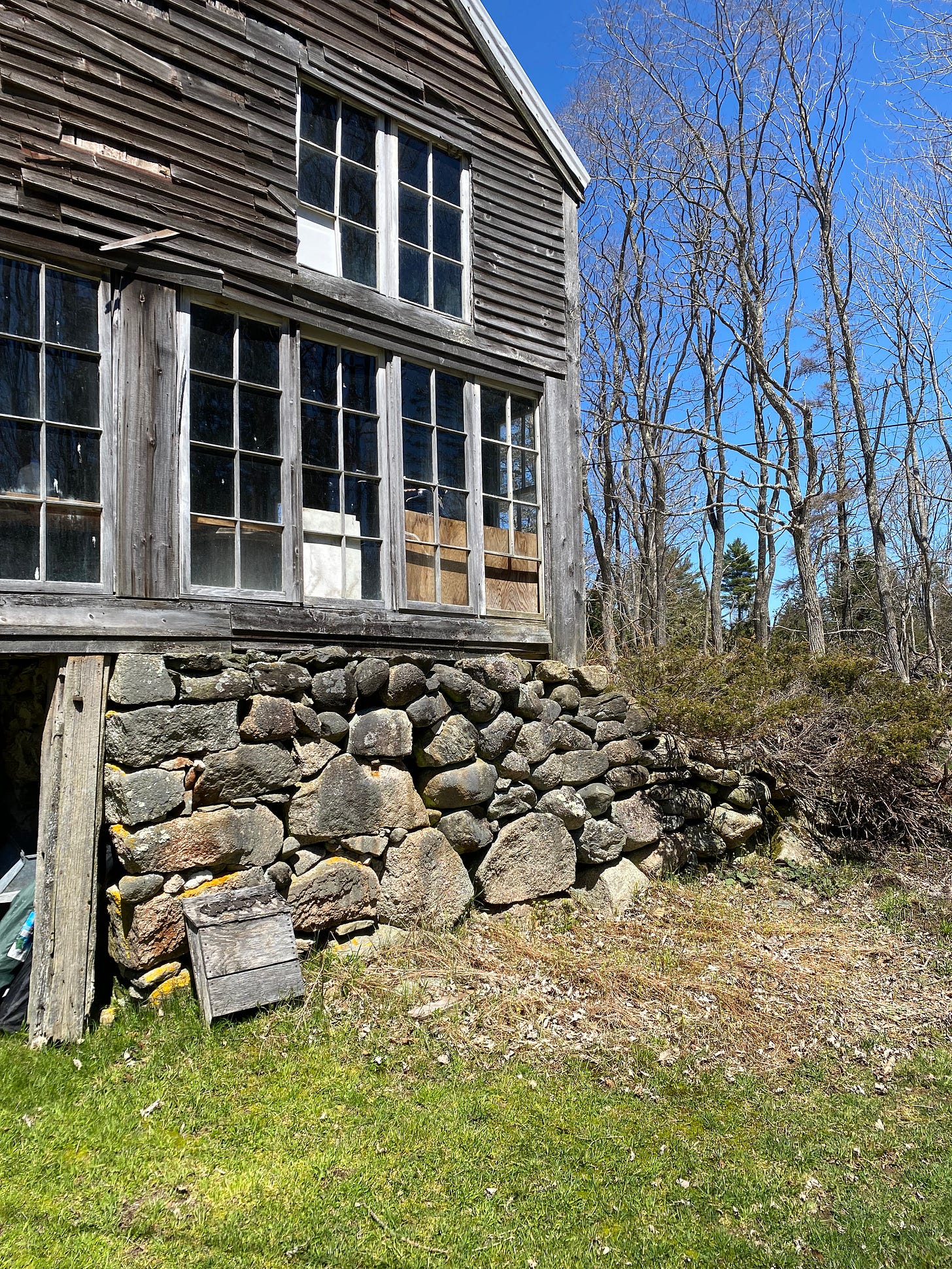
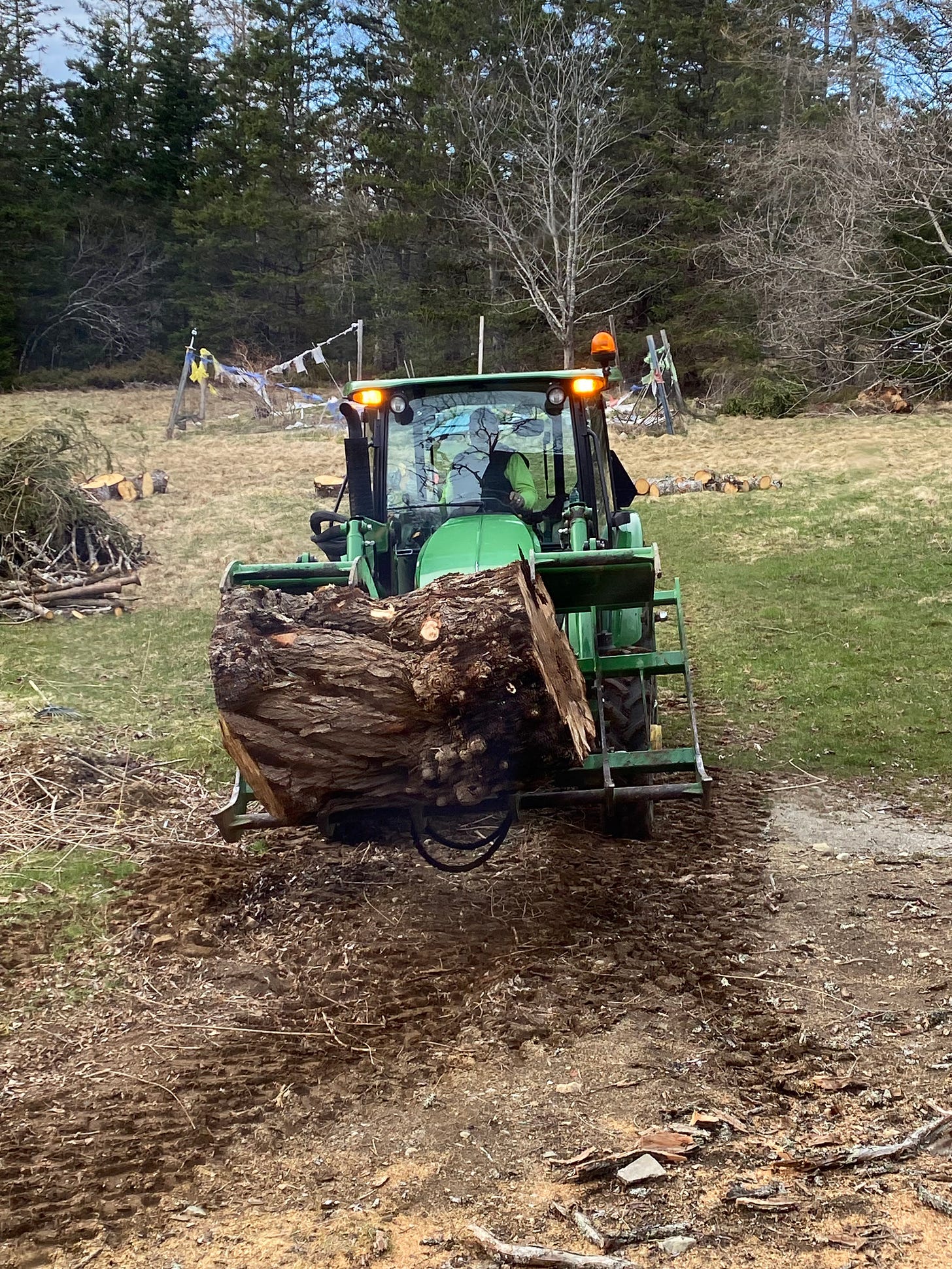
Such an amazing reveal! When we moved here, it was hard to touch a tree, now we know how fast they grow and encroach in.... glad you have some more sunlight!